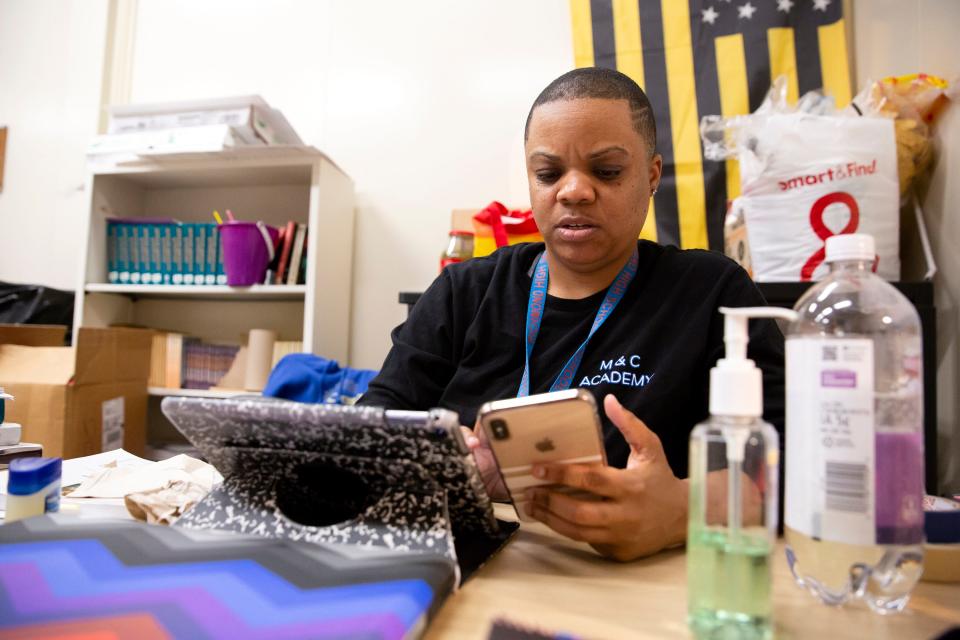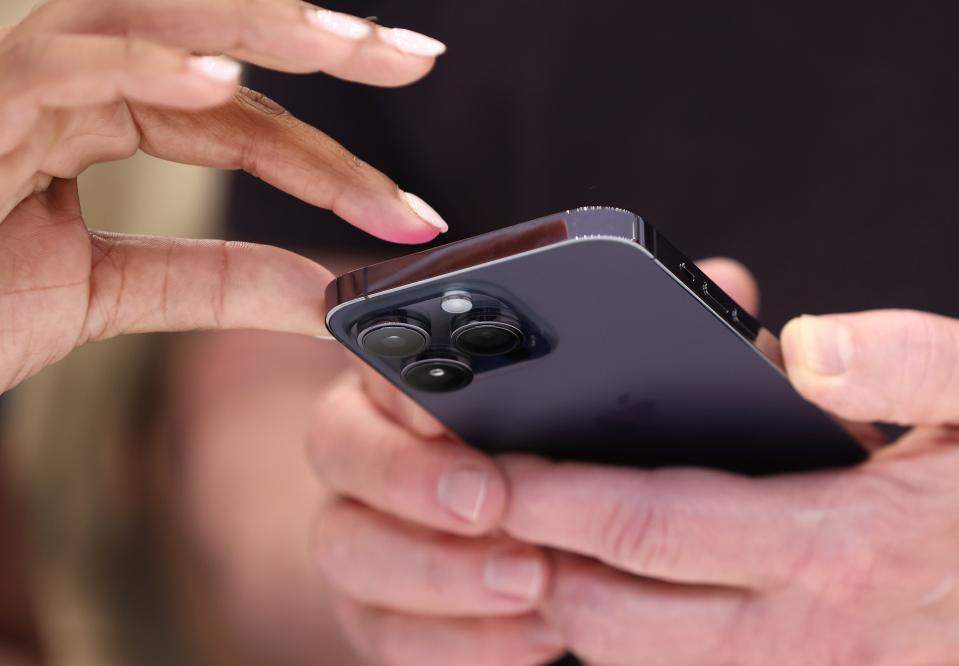What the duck! If autocorrect is so smart, why are the corrections so wrong?
Autocorrect? More like "auto incorrect," thanks to those annoying typos and unexpected word switcheroos that botch messages and embarrass you in front of friends and colleagues.
Why is autocorrect so bad now? It isn’t really, says Brad Myers, a professor in the Human-Computer Interaction Institute in the School of Computer Science at Carnegie Mellon University.
In fact, autocorrect has become “significantly more accurate” over time as algorithms improve and adapt to the idiosyncratic ways we communicate, Myers said.
So why do we feel like autocorrect is getting worse? “People always think autocorrect should be even smarter," he said.
Autocorrect is always on by default, so we’re often oblivious when it saves our bacon. But the autocorrect bloopers worthy of the BuzzFeed Hall of Fame? Those we notice.
"Because it’s usually pretty accurate, people notice when it’s not doing something it seems like it should have learned,” Myers said. “Fundamentally people want autocorrect to read their minds. Happily that is not what the computer is able to do, and hopefully it never will.”
More: Cybersecurity pro: TikTok may be fun, but you should consider removing it
What is autocorrect and why do we need it?
Autocorrect is a feature that automatically makes or suggests corrections to spelling or grammar mistakes.
Why do we need it? Think clumsy thumbs carelessly flitting from key to tiny key.

“Autocorrect is designed to facilitate faster and error-free typing on phones,” said Chris Chen, an assistant professor in the School of Communications at Elon University’s communication design department who has studied automated features.
For example, as we type, autocorrect take cues from where our fingers land on the touchscreen keyboard and from the other words in a sentence. Then it corrects words based on what we’ve typed. These days, it even goes back to fix additional words once we type some more.
How does autocorrect work on the iPhone?
Apple says autocorrect looks for context to determine what we are trying to type but also refers to a keyboard dictionary – basically a list of known words.
The keyboard dictionary also gets to know us based on what we've typed before. It learns words that are typed correctly two times, with the exception of some profanity. (Duck!)
It also keeps track of other information on your phone, such as entries in your address book, so that autocorrect recognizes those names.
Why autocorrect is automatically changing words
Autocorrect is not only getting more sophisticated, but it's also getting more proactive.
According to Apple, autocorrect may change words that are in the keyboard dictionary if it thinks we mistyped based on where our finger tapped and if there is another word that would make more sense in the sentence.
Amazon flags 'frequently returned' items: Amazon warns shoppers about 'frequently returned' items on its platform
Why we love to hate autocorrections
We usually shrug off minor flubs such as changing “on” to “in,” “of” to “if,” “its” to “it’s,” or “well” to “we’ll.”
What causes our blood pressure to rise? When we don’t notice our words have been replaced in a way that changes what we are trying to say.
“Autocorrect clearly started as something very thoughtful, because we are all typing on the run and constantly misspelling everything. But all these enhancements that have been made to it have made it awful,” said Carolyn Wysinger, an author and speaker.

Wysinger says she's embarrassed when she discovers autocorrect fails in sent emails.
“It replaces words that don’t need replacing with words that make no sense,” she said. “It auto-populates the craziest things, and I’m pretty sure it changes words just before you hit send.”
Why are there so many autocorrect fails?
Experts say autocorrect isn’t clever enough to get it right all the time. It gets tripped up by unusual or foreign words, acronyms and proper nouns.
And sometimes it can't get the hang of our individual quirks. Annoyingly, it seems to learn from our mistakes, like when we type “thr” instead of “the” one too many times.
Apple buy now, pay later: Apple's buy now, pay later plan launches, allowing users loans for purchases
“Autocorrect lacks individuation and personalization. It often does not recognize users’ preference and writing habits,” Chen said.
Why autocorrect is so frustrating: No control
None of this was a federal case when we were mostly using our phones to text friends. But now we use our phones for everything from texting mom to texting our boss.
The main issue is not having enough control over autocorrect, Chen says. Her recent study found that user control is a universal need with automated features, and that includes autocorrect.

“For example, once the system autocorrects something, it refuses' users ability to make further changes as the machine thinks that it is correct,” she said. “This issue suggests that users need more control over their experience with autocorrect. They would like to have a final say of which word to use in their writing.”
Where is autocorrect on my iPhone?
So how do we wrest back some control from autocorrect gone wild? You can make changes to autocorrect only in your iPhone settings.
Chen says that's not a user-friendly experience. “It would be much easier if users can control the status of the features on the messaging interface directly,” she said.
How do I change autocorrect in iPhone settings?
Here are some tips and tricks to fix autocorrect.
Reboot your dictionary: You can reset your iPhone’s dictionary: Settings > General > Transfer or Reset > Reset > Reset Keyboard Dictionary.
Add your own words and phrases: You can add words or phrases to the Phrase and Shortcut fields to create your own autocorrections, says Aaron Schecter, an assistant professor of management information systems at the University of Georgia, Terry College of Business. Settings > General > Keyboard > Text Replacement. You can also add words – even salty ones – to your address book to nudge autocorrect.
Switch to predictive text: Predictive text suggests changes rather than making them so you can tap or ignore them. Settings > General > Keyboard > Predictive.
Talk instead of tap: Try dictation or send a voice memo instead, Schechter recommends.
Slow down: Face it – we are a nation of sloppy typists. And the more autocorrect swoops in to fix our mangled sentences, the sloppier we get.
“The biggest thing is to be wary of complacency. Especially if you are sending something important like an email, just don’t fire and forget. You need to actually look at what it typed for you,” Schecter said. “Being aware and slowing down a little bit is probably the best thing you can do.”
How to turn off autocorrect
Turning off autocorrect is the nuclear option because you will be typing without a safety net. Settings > General > Keyboard > Autocorrect.
If you're not ready to dump autocorrect, you can make minor adjustments such as turning off auto-capitalization or smart punctuation.
Tips and tricks to fix autocorrect on Android
Android phones work a little differently from iPhones. Autocorrect is controlled by the keyboards available on Android devices like Gboard that run within Messages by Google and other apps.
Google offers these tips to tame autocorrect.

Add words to your dictionary: On your Android phone or tablet, open any app that you can type with, like Gmail or Keep. Tap an area where you can enter text > Enter the word you want to add > Tap the word underlined in red >Tap Add to Dictionary.
Change suggestions for words and emojis: To change the types of suggestions you get: Open an app. Tap where you can enter text. Tap on the More (…) button in the quick access bar > Pick from the options.
Change the size of the keyboard: When using Gboard, you can change the size of the keyboard and move it to a position that feels most comfortable in the quick features menu. Press on arrow or G in the suggestion strip > Tap More (…) > Tap the One-Handed Mode button > Adjust the size and position of the keyboard.
Adjust the height of your keyboard: You can also adjust the height of your keyboard. Open any app that you can type with. Tap where you can enter text >Tap More on the quick access bar > Settings > Preferences. Under Layout, tap on Keyboard Height.
This article originally appeared on USA TODAY: Auto incorrect? Try these iPhone tricks to fix autocorrect fails


